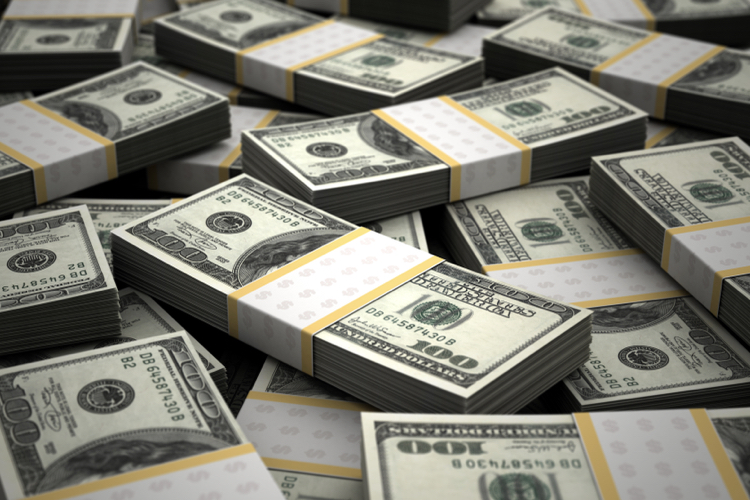On this occasion, the poor performance of China’s enormous economy is helping the Federal Reserve in its fiscal policy to curb inflation.
Each day that passes, with every new piece of information that is made public, it seems that the economy of the United States, supposedly commanded by the Federal Reserve (the Fed), is getting closer to achieving something extremely unusual: what is known as a soft landing, characterized by a transition to an overly strong economy with high inflation, to a less dynamic economy, where inflation is kept under control and unemployment does not skyrocket. Achieving this kind of transition has been very difficult historically, but the financial markets are getting behind what on this occasion will be possible, though only owing to the misfortune of an unwanted ally: China.
The Fed must perpetually find a balance between having the lowest rate of employment possible and keeping inflation under control. This means that it will attempt to create as much growth as possible while maintaining inflation within the desired limit of 2%.
From 2021 to date, inflation has sat well above the 2% limit, fed by an increase in costs as a result of the pandemic, but also by overstimulated economic growth.
Before this situation, the Fed had embarked on a policy of the most aggressive rate raising seen in the last 40 years, with the goal of reducing excess demand to cool inflation, while avoiding an economic recession that would fuel unemployment.
The information that has come to light in the past week has shown that this goal seems to be within reach: Inflation figures across sectors are at the lowest levels seen in the last two years, while figures from the labor market show that it is still robust even when taking cost pressures into account.
The growing possibility that this scenario will take hold is likely to bring buoyancy to stock markets, setting records for the year and leading to historic winning spells, elevating optimism with respect to accelerated growth in earnings and corporate dividends. The leading Wall Street index, the S&P 500, has noted a staggering increase of over 20%, one of the best in history for the period between January up until now.
The landslide of good news has been followed by rising and boundless euphoria in market values, where prices have fallen to reach valuations that imply that everything will be perfect, that nothing can go wrong and that nothing will hinder this fantastic situation of high growth and low inflation that soon will be accompanied by a fall in the Fed’s interest rates.
It is normal that financial markets are responsive to facts. Investors always try to anticipate so as to maximize profits. So, what could go wrong in this perfect scenario?
First, there is inflation itself. Given that the economy remains stable, and demand is very strong, there are two driving factors behind disinflation: improvement of global logistics and high base effect. The first is obvious. The semiconductor market, for example, which is essential in multiple industries worldwide, has gone from an alarming shortage to excesses of stock. The prices of chips have fallen for various reasons, perhaps the most important of which is the very weak performance of the Chinese economy.
The disappointing growth of the second largest economy in the world means it also falls behind in production of most raw materials, which in various countries has even brought negative growth rates to prices for producers, making it a matter of downward pressure for global inflation.
The second driving factor, however, should be considered with caution. Inflation is usually measured using data from the most recent 12 months and current calculations incorporate data from the past summer, when inflation is unusually high. By using 2022 peaks in this calculation, it is to be expected that annual data comes out lower. What would happen, for example, if in a year we were to use the lowest inflation figures of the past months as a base effect?
If the North American economy is to remain this strong, with labor markets stretched as they are and excess of demand swollen, as it has been up to now, despite the aggressively high interest rates that we have seen, then the base effect, which is currently helping things, could flip and become a contributing factor to inflation pressure.
As football fans will know, however, a goalkeeper cannot perform without luck. Neither can the Fed. Just when the United States finds itself stuck at a crossroads between continuing to lower or raise interest rates to cool down the economy to control inflation, its main rival, China, is helping it do some of the dirty work, falling well below expectations and causing the disinflation of pressures across multiple markets of supplies key in the formation of global prices.
In the global economy, as in normal life, there is a principle that must be applied: No one knows who they work for, and on this occasion, the poor performance of China’s enormous economy is helping to bring happiness to the Fed, which is very close to achieving the miracle of a smooth landing, with a little help from its friends in China.
Shop For Night Vision | See more…
Shop For Survival Gear | See more…
-
Sale!

Mesh Shooting Hunting Vest with Multi Pockets
Original price was: $59.99.$39.99Current price is: $39.99. Add to cart -
Sale!

Portable Mini Water Filter Straw Survival Water Purifier
Original price was: $29.99.$14.99Current price is: $14.99. Add to cart -
Sale!

Tactical Camo Nylon Body Armor Hunting Vest With Pouch
Original price was: $49.99.$39.99Current price is: $39.99. Select options This product has multiple variants. The options may be chosen on the product page


















































